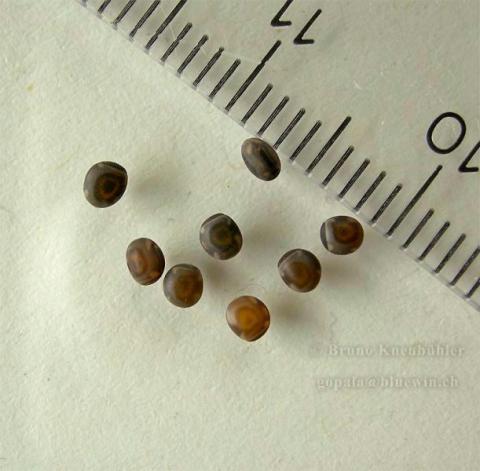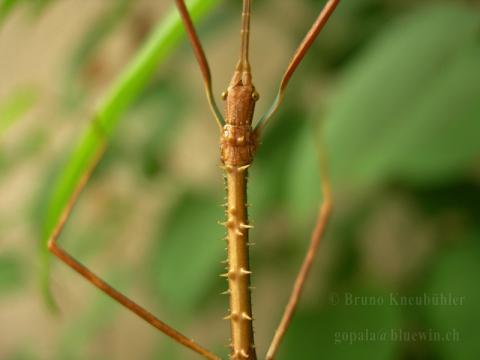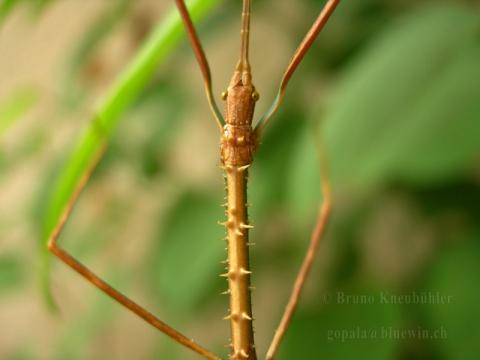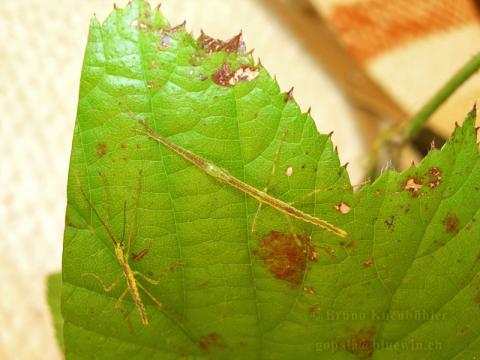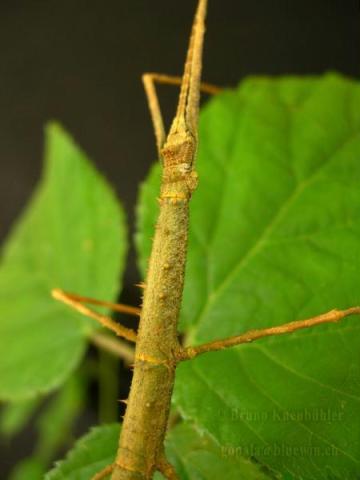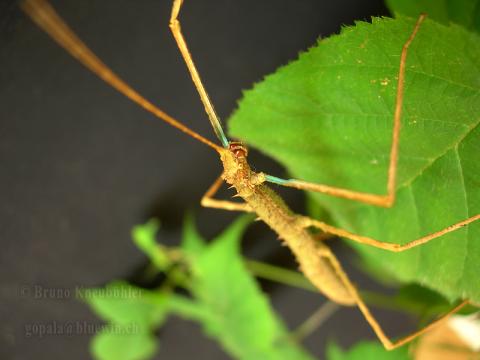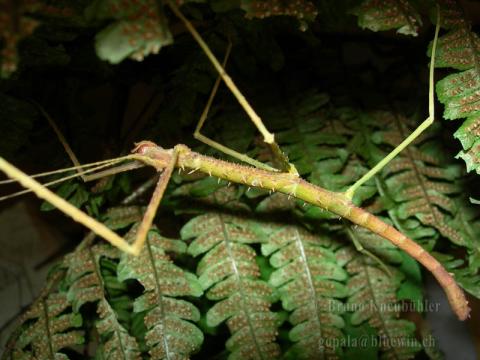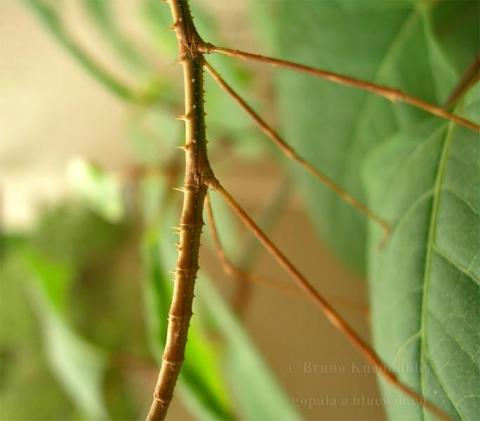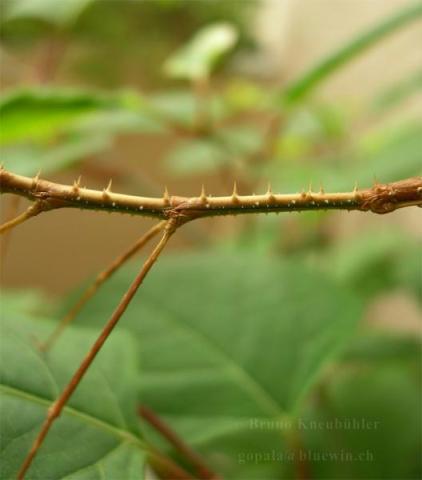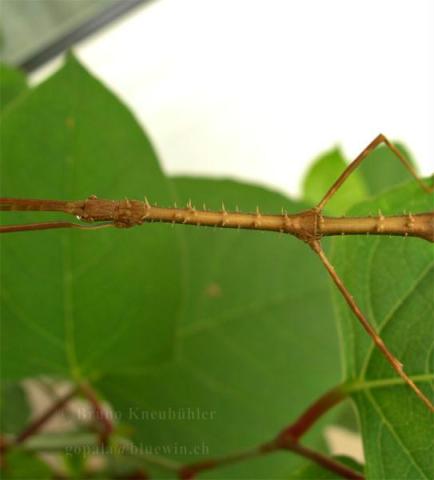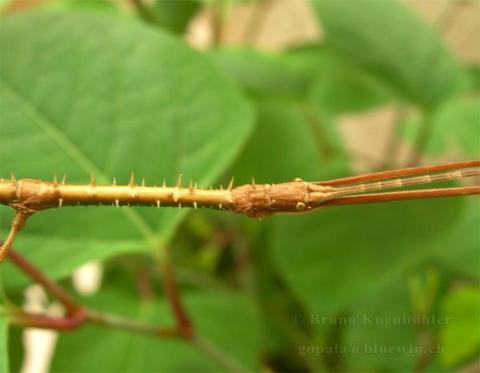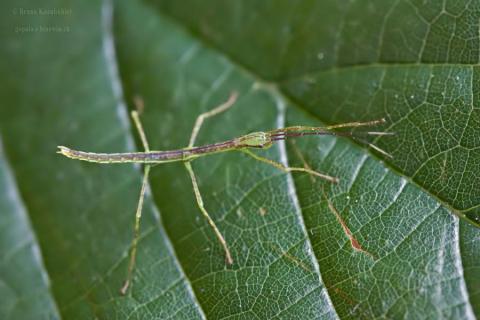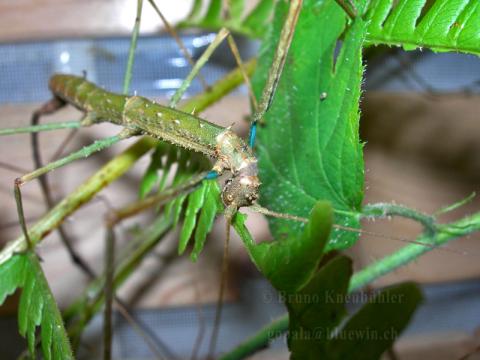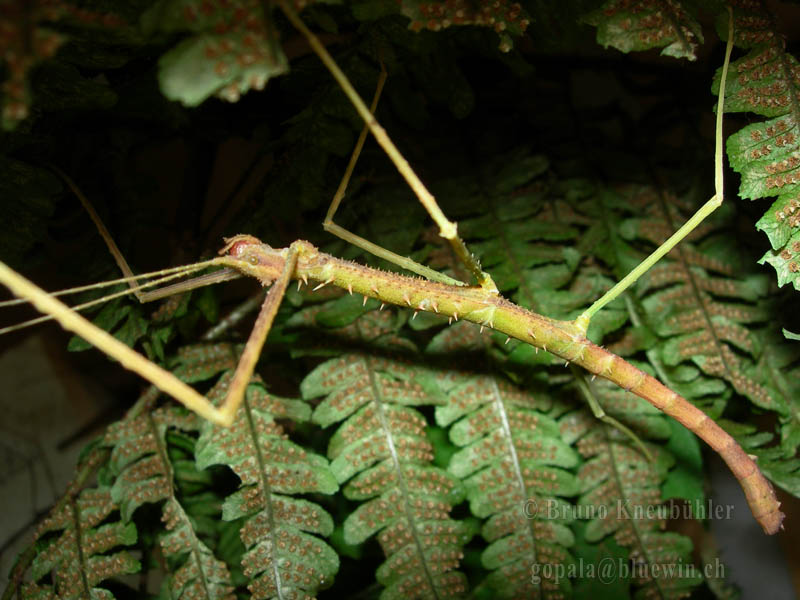
Genus
Species
Stock
CLP
347
Culture status
Probably lost
Foodplants
Bramble (Rubus spp.)
Salal (Gaultheria shallon)
Ferns
Hazel (Corylus avellana)
Firethorn (Pyracantha)
Breeding notes
(by Bruno Kneubühler)
General Notes
- 2008 - first successful culture of this species by Bruno Kneubühler
- this species has originally been described as Ocnophila ramulus by Giglio-Tos in 1898. But it belong to the genus Dyme (O. Conle - personal communication, 2008)
- 2008 - I have distributed this species as Dyme ramulus to other breeders
_________________
Origin
- Rio Topo (Tunguragua) in Ecuador
_________________
Females
- typical wingless, yet quite spiny stick insect - about 7,5 – 8 cm long
- their basic colour ranges from dark brown to light brown to greenish-brown
- several larger spines are located on their thorax and the first abdominal segments, and there are numerous small spines on the underside of the same body areas
- as it is typical for the genus Dyme, the inside of the first part of the fore legs is coloured bluish
- feelers are long
_________________
Males
- typical wingless, yet quite spiny stick insect - about 6,5 cm long
- their basic colour is generally light brown with some white dots (sometimes small spines) along the side of the body
- many larger spines are located on their thorax and the first abdominal segments, and there are numerous small spines on the underside of the body
- the inside of the first part of the fore legs is coloured bluish too
- feelers are long
_________________
Eggs
- small, dark coloured eggs, about 2 x 1,5 mm
- surface is smooth yet matt
- incubate them at room temperatures (18 – 25°C) on a damp, but not too wet substrate
- incubation time at these temperatures is about 2,5 - 3 months
_________________
Food Plants
- nymphs and adults accept bramble as food plants. Nymphs will grow up on bramble easily.
- but especially adult females will prefer firethorn, Salal (Gaultheria shallon) and the bramble species with the thick, long spines
- fern is even better accepted
- further they feed on plum leaves, hazelnut leaves
_________________
Breeding Notes
- easy to breed – still they need proper basic care
- this is a species from a higher altitude, so it seems that they do better when kept at temperatures of 20°C or below. But my culture is also doing well at 20-23°C
- nymphs are green in colour
- keep nymphs and adults in a fairly airy, yet humid cage. A constantly wet paper towel on the bottom of the cage will provide a humidity, which is high enough for them to moult successfully
- males mature after about 3 months and females after about 4 months
- this species is sometimes also active during the day, they can be seen feeding and walking around
- females will start laying eggs about 2 – 3 weeks after their final moult - several eggs per day, which just let drop to the ground
- from the prothoracic glands they can produce a white defensive secretion when they feel strongly threatened. This secretion has not specific smell, yet it probably causes a (non-permanent) burning sensation when it comes in contact with the mucous membranes in the mouth or in the eyes. I have not tried this out :) Thus one should be careful when handling them
